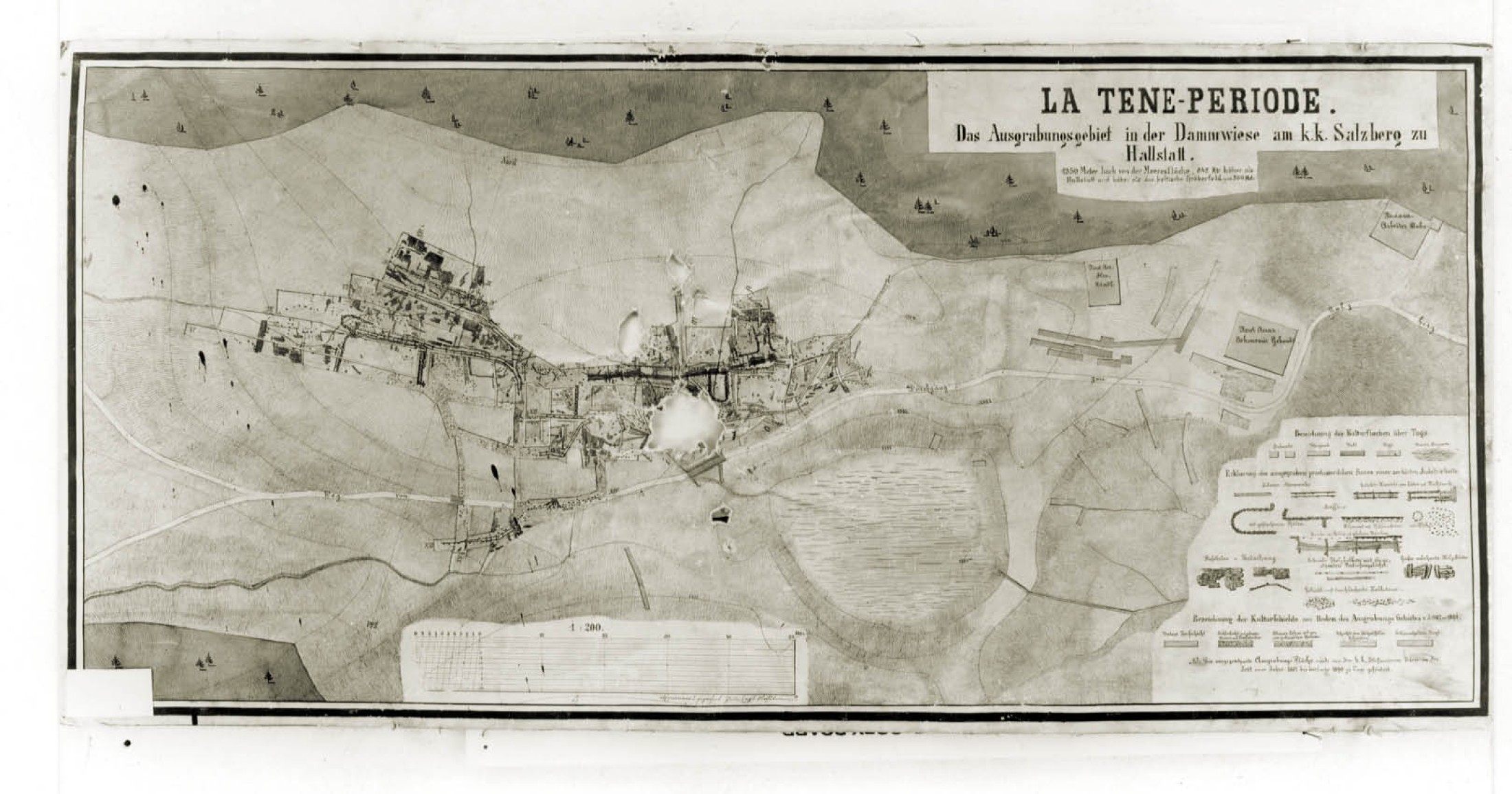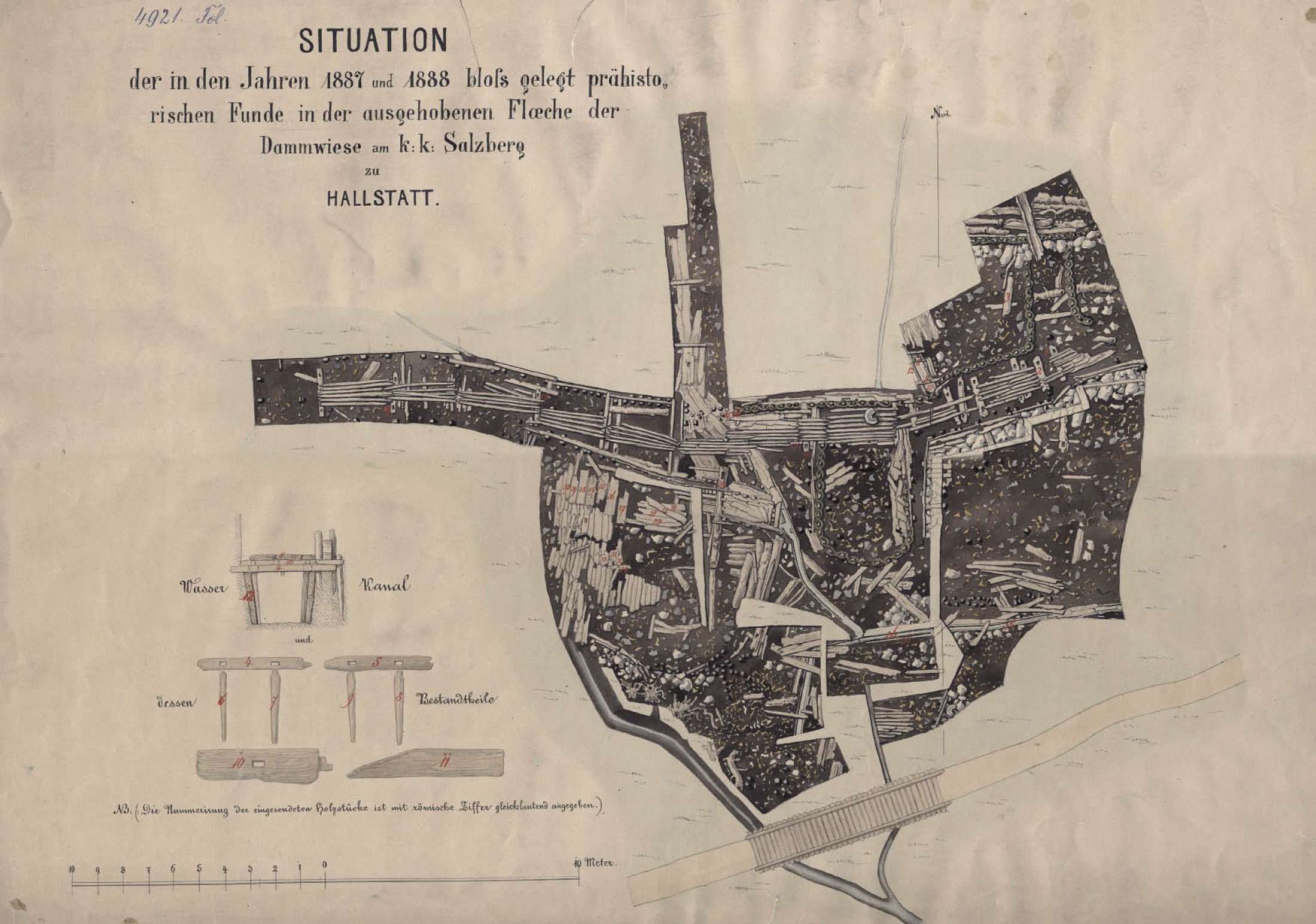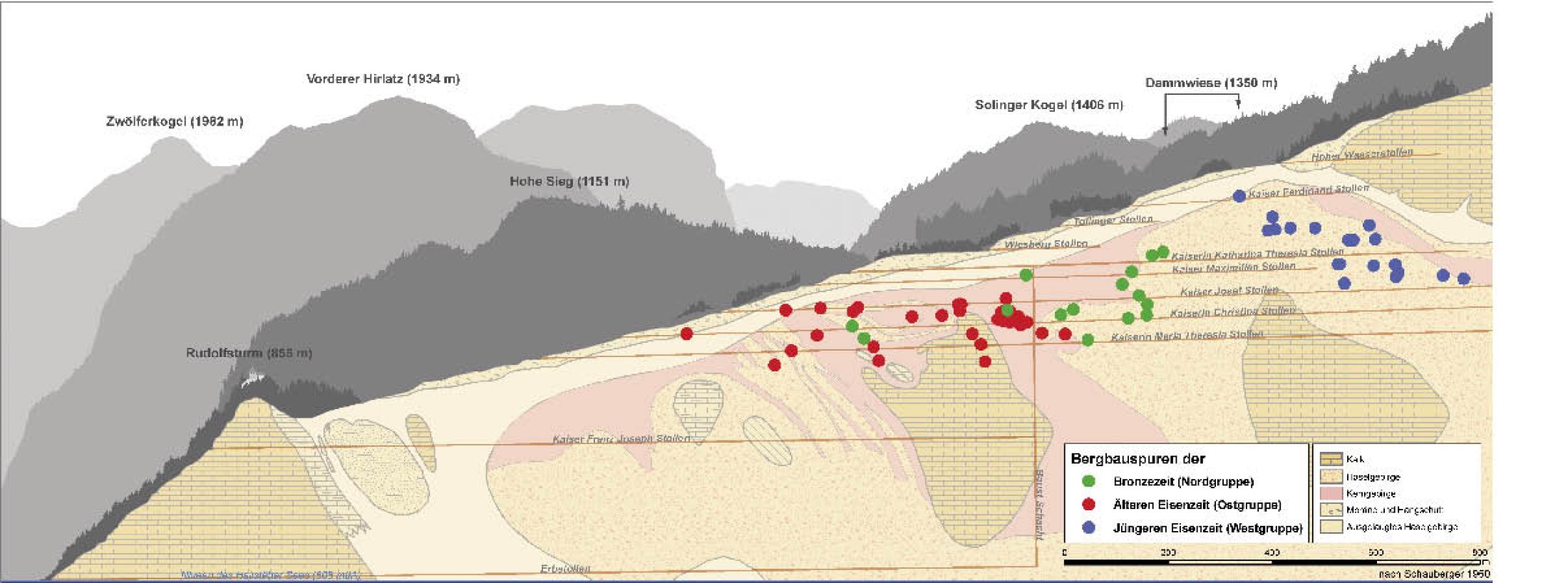Hallstatt during the La Tène Period
Most archaeological finds in Hallstatt dating back to the La Tène Period (around 400 BC until 30 AD) come from the alpine moorland at the Dammwiese, where a miners’ settlement was established at the time. During salt production in the 16th and 17th century remains of the mine itself were discovered. We are not yet in a position to tell how long the Dammwiese settlement existed and how long the Late Iron Age mine was operated. The settlement’s burial site has, however, not yet been found. During the early La Tène Period, until around 350 BC, the burial site from the Hallstatt Period continued to be used.General information on the La Tène Period
The La Tène Period in Hallstatt
General information on the La Tène Period
The Late Iron Age, named La Tène period after the famous archaeological site in Switzerland, was the last prehistoric period in Central Europe. It is characterized by a new style of art with Mediterranean influences, by technical and economic innovations, and by a change in living and burial habits.A new leaf was turned in the history of the Hallstatt mining. After the catastrophe that had buried the mine and devastated the High Valley, a new start was made on the Dammwiese. The excavations conducted on the Dammwiese in the 19th and 20th centuries yielded remarkable wood finds.
The La Tène Period in Hallstatt
According to current knowledge, the Late Iron Age mining in Hallstatt started towards the end of this period, in the 2nd century BC. None of the finding places is accessible today. But the sparse information provided by saltworks documents suggest that the so-called Western Group, with a surface of 72,000 m2 and reaching a depth of 330 m, must have been the largest of the prehistoric mines. Excavations on the Dammwiese undertaken in the 1880s and the first half of the 20th century have produced a miners’ settlement with dwelling houses and farm buildings. This is the first known prehistoric settlement in the High Valley. So far, neither Bronze Age nor Early Iron Age settlements have been discovered.The Dammwiese is a raised bog lying 1357 m above sea level just below the natural timberline. Apparently, the miners’ settlement and the mine were transferred to this place to protect them from mudslides, debris flows, or landslides. The terrain on the Dammwiese was very moist and particularly well suited to the preservation of wooden structures and objects, such as remains of buildings and tools. In addition to various wooden implements, remains of wooden cabins, their foundations and drainage ditches have been preserved. The swampy soil of the Dammwiese required extensive drainage systems in the Late Iron Age, and they were discovered in the course of the excavations carried out in the 1880s. At first, they were believed to be channels to drain natural brine. Eventually, a timbered entrance to an adit with an entrance structure building was discovered in 1937.
(Reschreiter, H. – Kowarik, K. – Loew, C.)




